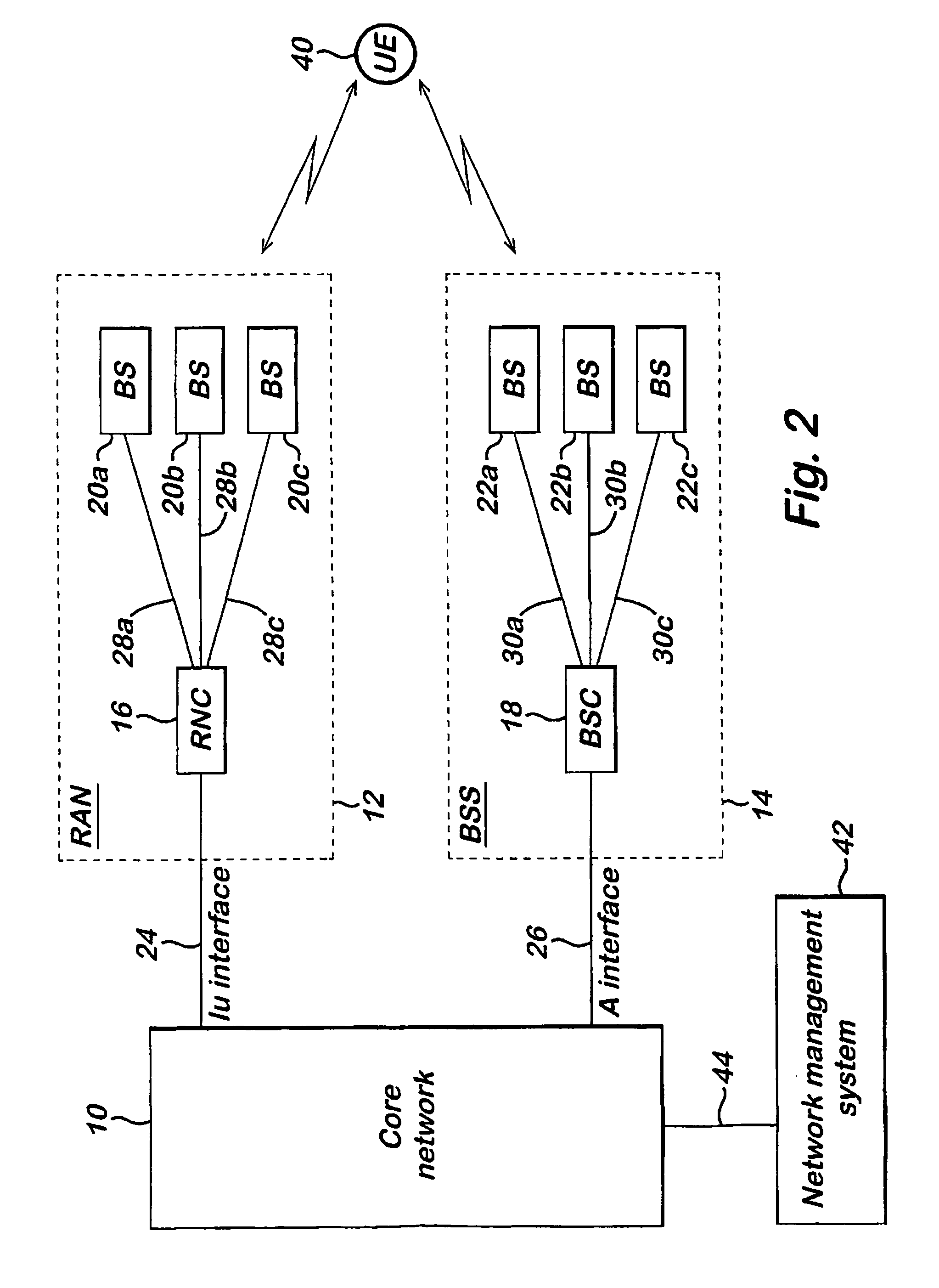Service priorities in multi-cell network
a multi-cell network and priority technology, applied in the field of multi-cell network service priority, can solve the problems of not and achieving satisfactory distribution of different type of connections in the available technologies and cell types from the operator's point of view
- Summary
- Abstract
- Description
- Claims
- Application Information
AI Technical Summary
Benefits of technology
Problems solved by technology
Method used
Image
Examples
Embodiment Construction
[0035] The invention will now be described by way of reference to a particular, non-limiting, example. The example chosen is that of a network having both 2G and 3G services. The 2G services are GSM services, and the 3G services are 3GPP. In this example it is also assumed that the network supports enhanced 2G services, specifically EDGE. Furthermore for each of the services, it is assumed that the network provides both micro-cells and macro-cells.
[0036] FIG. 1 illustrates cell coverage in such a network. FIG. 1 illustrates three GSM cells 32a to 32c. Each cell is supported by a GSM base station 22a to 22c. In addition, within each GSM cell there is provided 3GPP cell coverage, as illustrated by the dashed lines defining 3GPP cells 34a to 34c. In the example shown, it is assumed that 3GPP coverage is more restricted than GSM coverage. Each of the 3GPP cells is supported by a base station 20a to 20c. It should be noted that the 3GPP base stations are not necessarily co-located with t...
PUM
 Login to View More
Login to View More Abstract
Description
Claims
Application Information
 Login to View More
Login to View More - R&D
- Intellectual Property
- Life Sciences
- Materials
- Tech Scout
- Unparalleled Data Quality
- Higher Quality Content
- 60% Fewer Hallucinations
Browse by: Latest US Patents, China's latest patents, Technical Efficacy Thesaurus, Application Domain, Technology Topic, Popular Technical Reports.
© 2025 PatSnap. All rights reserved.Legal|Privacy policy|Modern Slavery Act Transparency Statement|Sitemap|About US| Contact US: help@patsnap.com



